Fujiyoshida City in Yamanashi Prefecture is located about 90 minutes by car from central Tokyo. Pointing straight towards Mt.Fuji is a retro shopping street called Honmachi-dori, and it is clear that life here is centered on the famous peak. In fact, the area was well-known as a source of medicinal herbs during the Edo period.
Based here is Yuta Hirano of “HERBSTAND”, an evangelist for the spread of herb culture in Japan.
How does he convey the allure of herbs to many people? And what kind of activities does he have lined up in future? We interviewed him to find out.
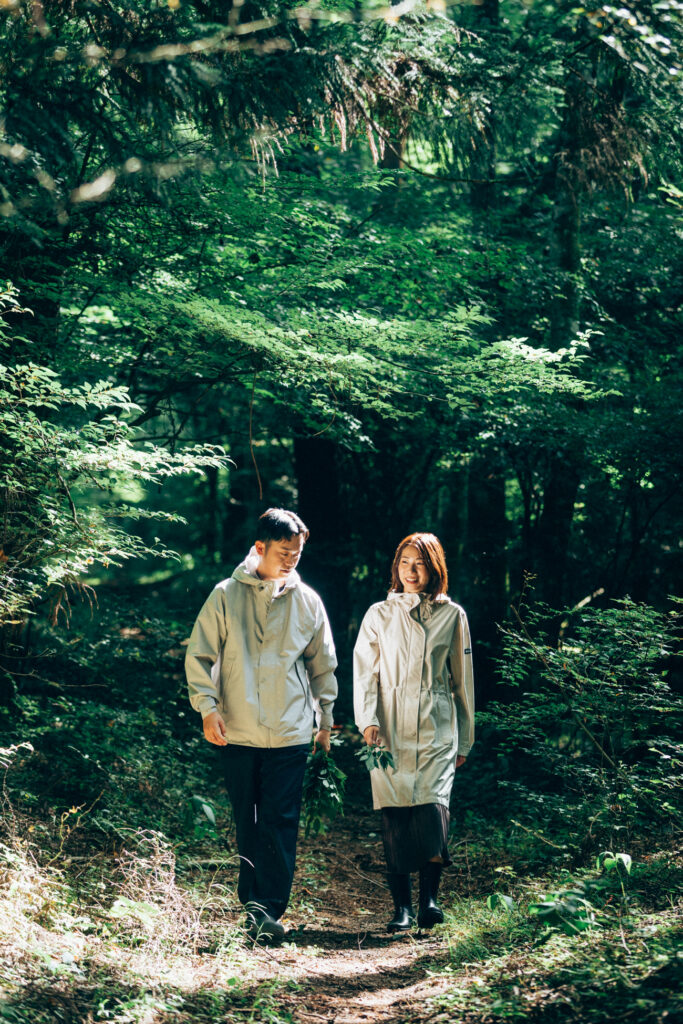
Herb Culture in Daily Life
Hirano-san and his partner Manami-san launched HERBSTAND in 2018. It all started when the two of them visited New Zealand.
“Herbs are very accessible in New Zealand because of the deeply rooted culture of caring for plants. Our host father would pick fresh herbs from his garden and make us a pot of herbal tea after returning from a hunting trip. That’s how ingrained they are in daily lives, and I thought that was really cool.”
With a genuine desire to popularize herbs in Japan, the couple took a leap of faith and moved to Fuji Yoshida. From there, they started a pop-up drink stand offering mojitos and other drinks made with fresh mint.
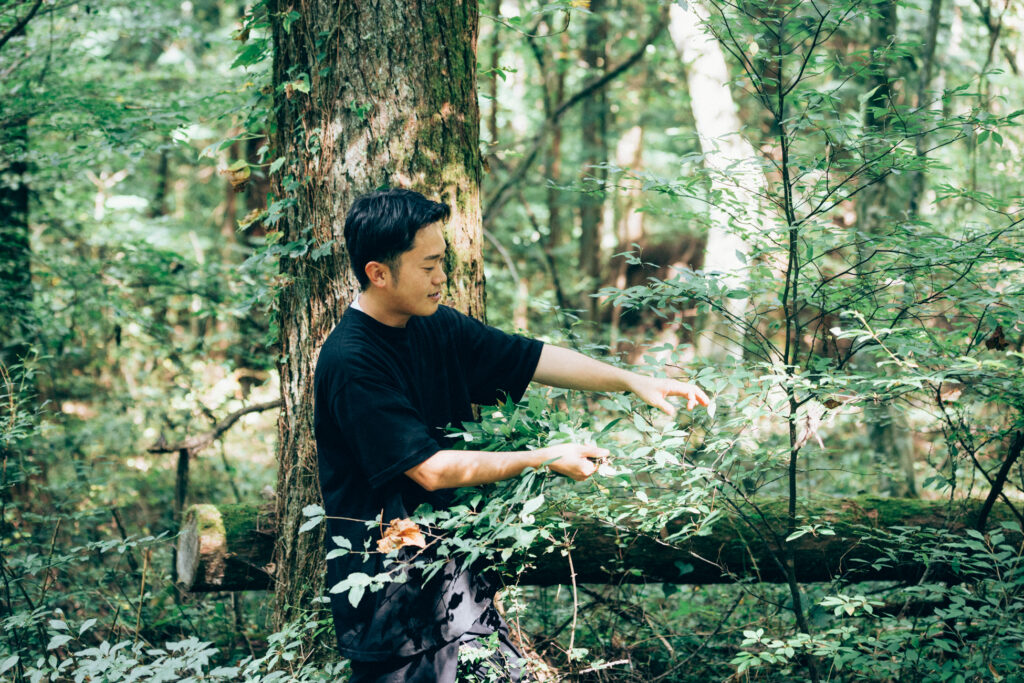
Then, the stars aligned and an opportunity presented itself.
“A municipality asked me if I would be willing to use some of the idle land that they couldn’t manage. Since Fuji Yoshida has clean water, we thought it would be a good environment for cultivation, and together with our friends, we began to manage the fields.”
These events led to growing herbs and making processed products as HERBSTAND. Now they are taking it one step further from there.
By regarding plants that grow wild in the forest as herbs, they are educating society that plants that are thought to be worthless have uses.
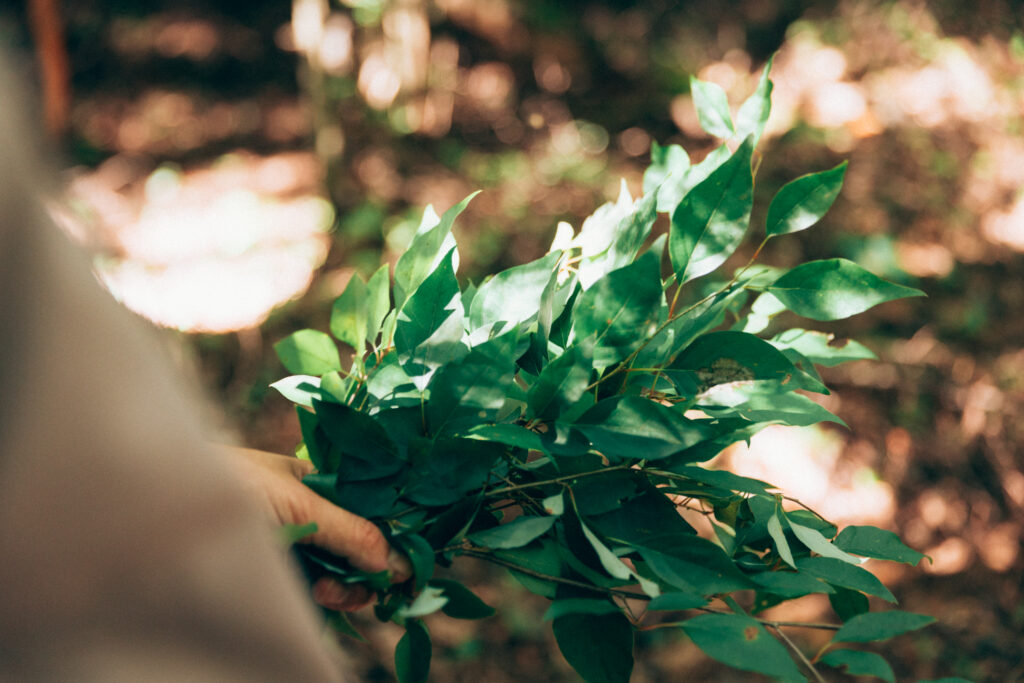
No such thing as a worthless plant
I accompanied Hirano-san on a walk through the forest. “This is called abrachan, which has a lot of oil in its bark and is sometimes used for torchlights,” he enthuses. “Please try putting some of the freshly harvested cypress in your mouth. How good is that fresh aroma?” In the space of 5 minutes, I also learned that pine trees can actually be used for soup stock and that some people even use them for bouillon.
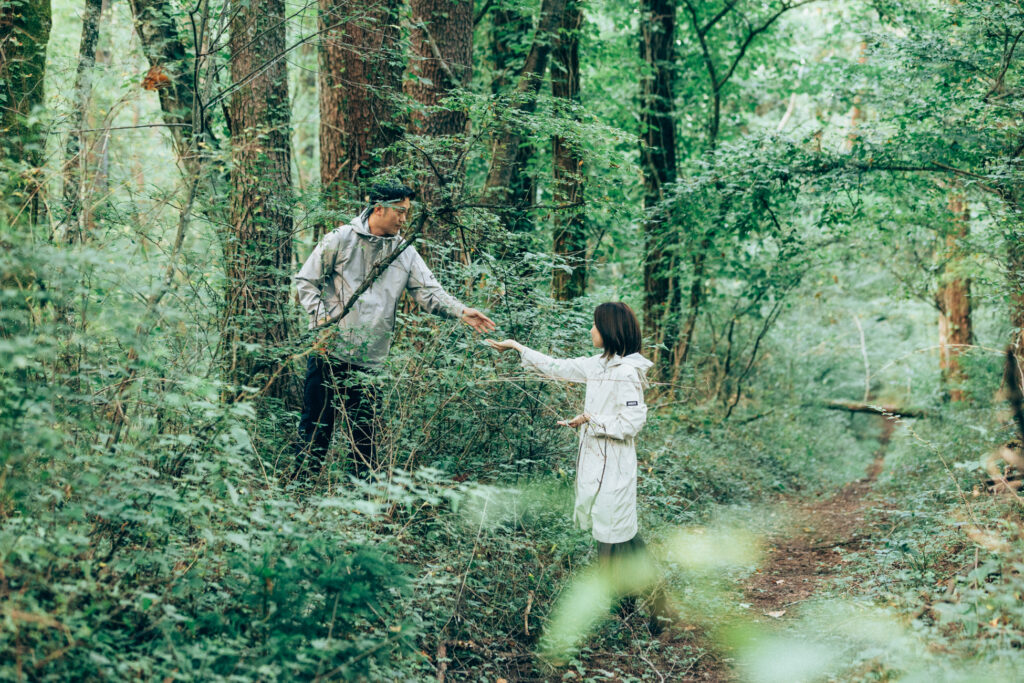

“The flavor of kuromoji varies depending on the region where it is grown. It would be interesting to be able to enjoy the taste of different regions, just as we do with coffee.”
Listening to Hirano-san talk, one is often struck with an epiphany moment. With regard to kuromoji, it totally made sense when he pointed it out to me, but it was completely new at the same time. Walking through the forest with him, one cannot help but realize that there is no plant that is worthless.
“There is a garden tree called byakushin commonly available at garden centers, that bears fruit. They are very fragrant and I see them as a kind of Japanese juniper berry. I think this could be used for distilling.”
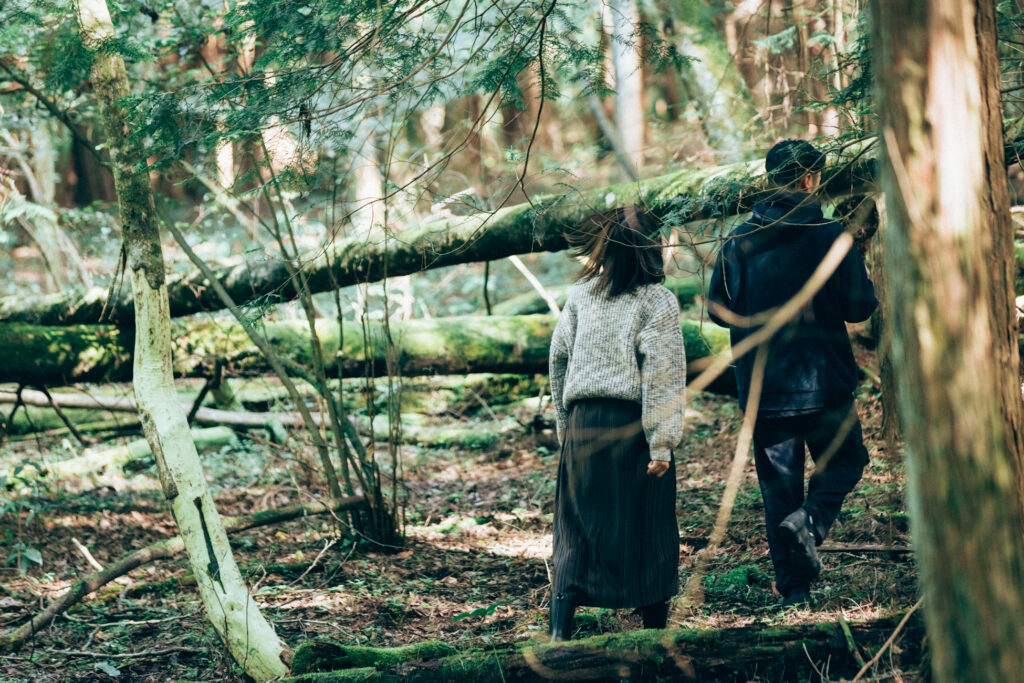
Japanese forests are treasure troves of herbs
When walking through the forest, Hirano-san’s anecdotes are not limited to flora and fauna. We also learn where his broad range of interests are kindled: “The ecosystem of Cat Street in Shibuya is chaotic and interesting, as if it reflects the city,” and “The plantings at Disneyland are meticulously arranged.”
He also shared some of his own ideas about herbs.
“The definition of an herb is that it is a plant that is beneficial to people. When we hear the word “herb,” mint and basil may come to mind, but they are actually not the only ones. There are many herbs in the forests of Japan and I want to spread the word to more people about the charm of Japanese herbs.”
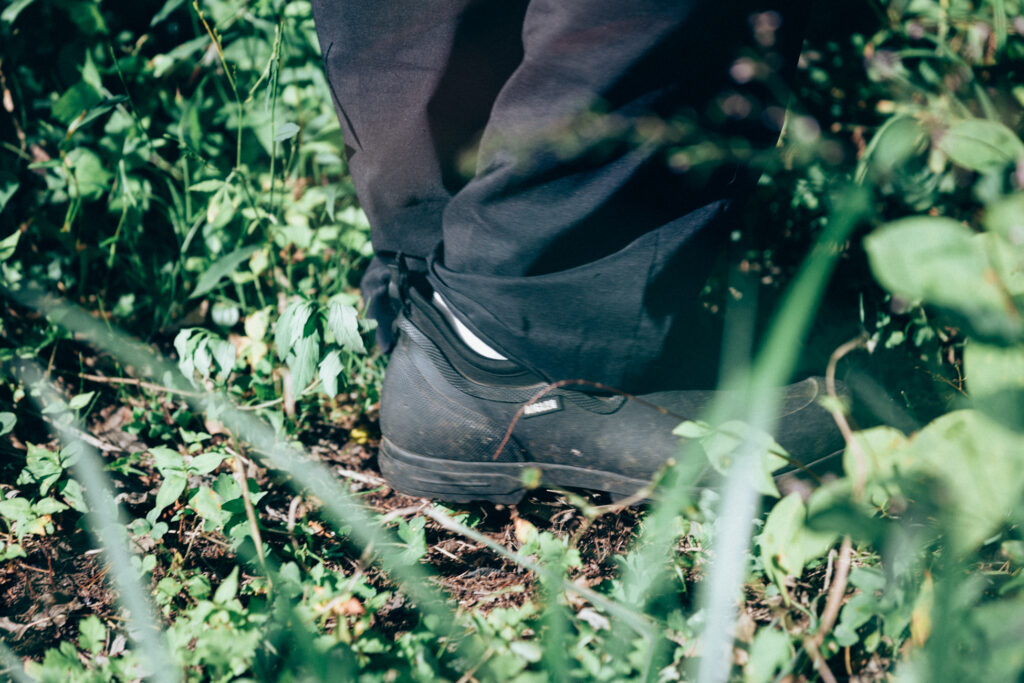
Hirano-san seemed so animated in the forest, and his enthusiasm for botanicals was palpable. In the same vein, he mentioned AIGLE’s “Les Four Plus 2 Clog.”
‘These rubber ankle boots work rather well as they grip well on mountain trails and are water resistant. I like that they are easy to slip on and off and I wear them every day now.
Spreading the word about herbs around us
HERBSTAND is thus finding new value by creating uses for plants that were previously thought to have none. They are researching taste by themselves, at the behest of chefs and other kindred spirits.
“We send plants to chefs, pastry chefs, bartenders, tea masters, phyto-therapists, distillers, and other professionals with whom we have relationships, and together we delve deeper into the plant’s uses and explore its possibilities. The value of a plant is gradually increased as these insights and discoveries are passed on to others!”
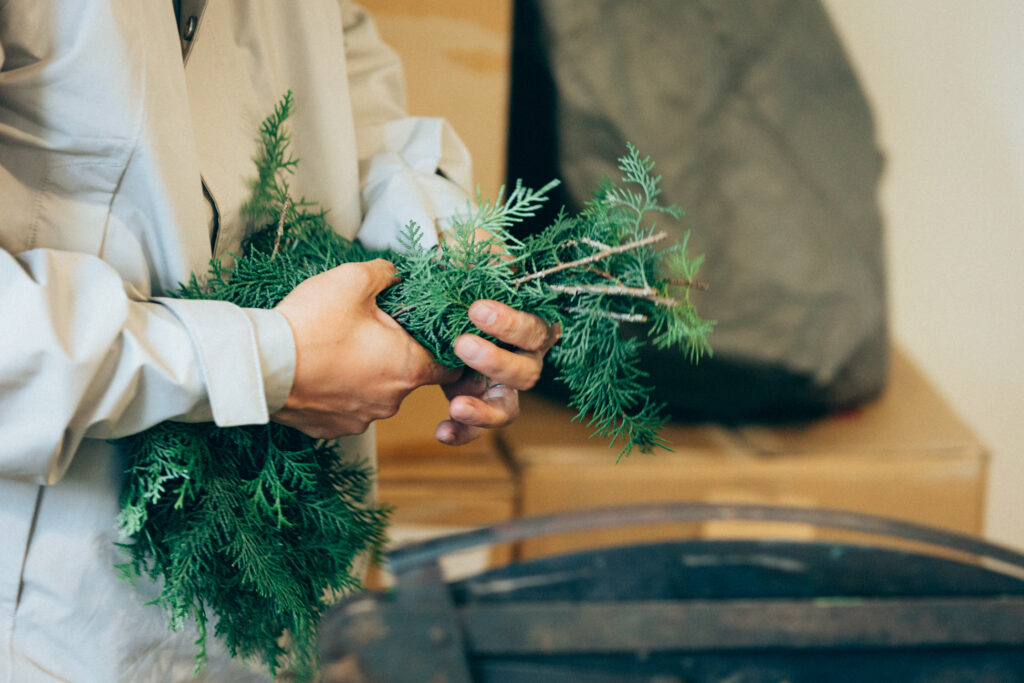
Through HERBSTAND, Hirano-san has found new value in many plants. Where is he headed next?
“I’ve been thinking a lot about the plants growing on the seashore lately. Maybe in years to come we will be harvesting flora not only in Fuji Yoshida, but also in the coastal lands as a new outpost.”
Even plants that we might otherwise dismiss have untold value. From a different perspective, we can see the potential in all plants, and this may be what HERBSTAND is trying to convey to society.
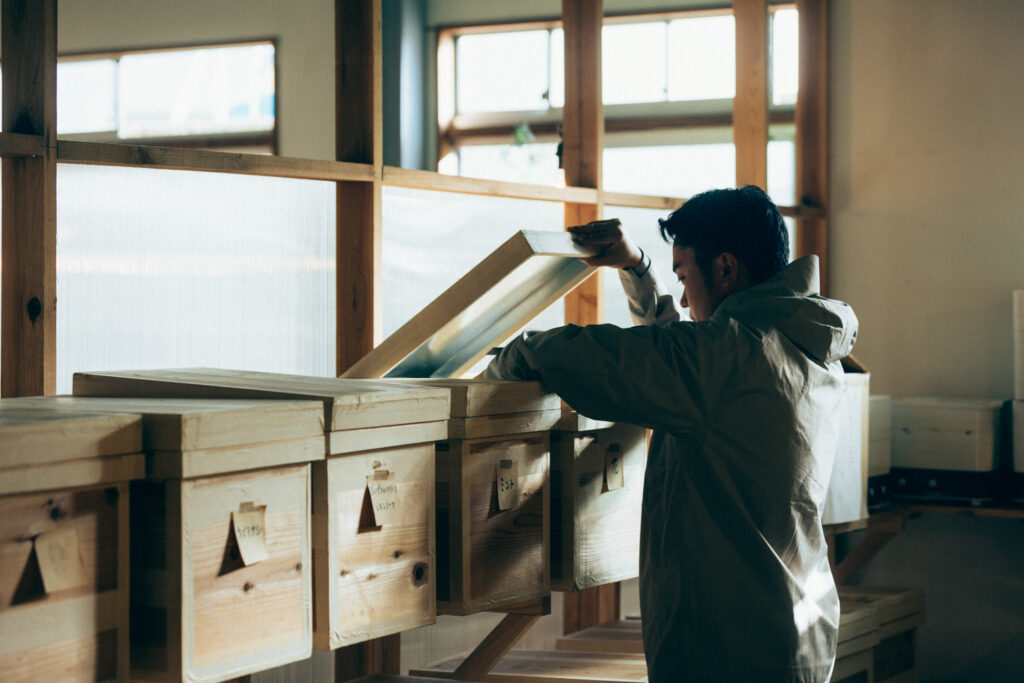
Yuta Hirano
Born in Yokohama, Kanagawa Prefecture in 1992. Influenced by skateboarding and subcultures, he started his own apparel brand at the age of 16. At 22 years old, he moved to Australia to study botany, a long-term interest. He moved to Yamanashi Prefecture at the northern foot of Mt. Fuji is in search of a place rich in nature, where he runs a business as the representative of HERBSTAND to embody the new possibilities of herbs.












